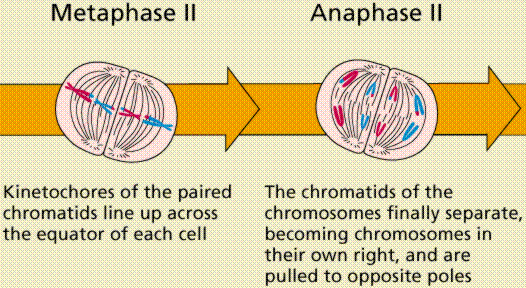Website can be closed on 12th to 14th Jan 2025 due to server maintainance work.

Experiment: Analysis of Metaphase II and Anaphase II in Meiosis
Aim:
To observe and identify the stages of metaphase II and anaphase II in meiosis using microscopy.
Materials:
1. Microscope with high-power and oil immersion objectives
2. Prepared slides of meiotic cells undergoing metaphase II and anaphase II (e.g., stained onion root tip cells)
3. Coverslips
4. Kimwipes or lens paper
5. Pen and notebook for recording observations
Experimental Procedure:
1. Place a prepared slide of meiotic cells undergoing metaphase II and anaphase II on the microscope stage.
2. Start with low-power magnification and focus on the area of interest.
3. Switch to high-power magnification to observe individual cells in detail.
4. Identify and record the characteristic features of metaphase II and anaphase II stages.
5. Pay attention to chromosome alignment and segregation during metaphase II and anaphase II.
6. Take note of any visible differences in chromosome behavior between the two stages.
7. Draw and label diagrams of representative cells at metaphase II and anaphase II to document your observations.
Observations:
– Metaphase II: Sister chromatids align along the cell equator, attached to spindle fibers.
– Anaphase II: Sister chromatids separate and move toward opposite poles of the cell, driven by spindle fibers.
Results:
– Metaphase II demonstrates the alignment of sister chromatids, ensuring proper segregation during anaphase II.
– Anaphase II features the separation of sister chromatids, resulting in the distribution of genetic material to daughter cells.
– Chromosome segregation during anaphase II contributes to the production of haploid gametes with unique genetic compositions.
Conclusion:
Observing metaphase II and anaphase II stages in meiosis provides insights into chromosome segregation and genetic diversity. These events are crucial for producing haploid gametes with diverse genetic combinations, essential for sexual reproduction and species evolution.
